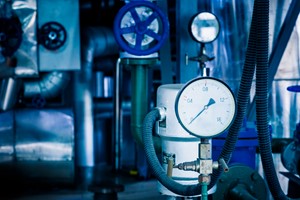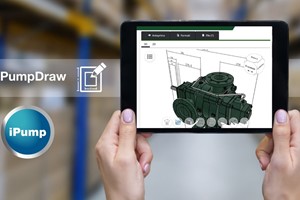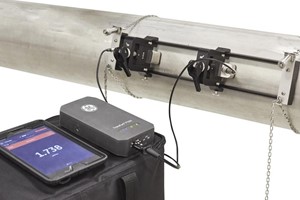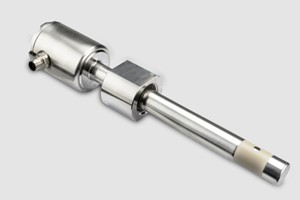Aeration in both municipal and industrial wastewater treatment is crucial to removing organic contaminants. Found at the heart of this process, noisy blowers have traditionally been the source of significant operational costs. With the launch of the HST 10, smaller sewage plants processing less than 10’000 m3/day (40’000 population equivalent) can take advantage of the benefits of Sulzer’s HST turbocompressors, which have provided thousands of customers with significant cuts in running costs for facilities and a huge boost in reliability.
In industries such as pulp and paper, food and beverage, chemicals, pharmaceuticals and mining, the HST 10 can provide productivity improvements in both core processes and integrated wastewater treatment facilities.
Boosting efficiency and reliability
The HST 10 is designed to set the standard for compressors of its size used in aeration processes. The best-in-class energy efficiency is achieved by using cutting-edge turbo technology and a permanent magnet motor designed specifically for its duty. Furthermore, the use of magnetic bearings and air cooling ensures the HST 10 has the lowest maintenance costs in the industry.
The design of the HST 10 means there are no gears, mechanical bearings, pumps or separate cabinet cooling fans. The absence of these failure-prone components will contribute to excellent reliability. Combined, the lower energy costs and running expenses offered by these machines will quickly realize considerable savings in operational expenditure (OPEX), which relates to a remarkable return on investment.
Reducing costs
In the municipal wastewater treatment environment, traditional blowers are the single largest consumer of energy on the site. Their reliability, or lack of it, can lead to considerable downtime for the aeration process, posing a risk to treatment outflow and the environment. Even with spare assets on standby, the blower house is often a cause for costly and extensive maintenance work.
However, tradition has given way to innovation, and the HST turbocompressor has proven that it is possible to have a reliable compressor that doesn’t need constant attention or high energy requirements. Essentially vibration-free and with low noise options available, the HST 10 can be installed in simple structures such as converted freight containers. The compact footprint of the HST 10 and simplicity of installation also add to the attractive package.
Sustainability more than skin deep
With the HST 10, sustainability starts at the core. The reduced energy consumption is of course the major driver for the minimized CO2 footprint. The lightweight design and the minimal need for consumables and spares means CO2 encapsulated in manufacturing is on a level of its own.
A huge contribution to the reduced environmental footprint comes from the long service life, as proven by the installed base of HST machines. With this technology, where no two rotating components are in contact with each other, the machine efficiency is maintained at a high level. At the end of service, all mechanical parts are intact and can be re-used or recycled with no worn-off material dispersed in used lubricants or the surroundings.
Competing technologies for high-speed operation use so-called air foil bearings for reduced friction, but these still require dry lubricants like PTFE for initial start-up. These may contribute to the amount of ‘forever chemicals’ that do not break down and persist in our environment. On the traditional blower side, screw compressors have emerged as an alternative, but these still use special coatings as well as gearboxes and lubricating oils, which add to their maintenance costs. Magnetic bearings are free of mechanical wear and will operate for decades with no need for service or overhaul.
Simple integration
Making the transition to Sulzer’s turbocompressor is a simple process, for which assistance will be provided by Sulzer application specialists and the worldwide field service teams. Having determined the most effective model and number of compressors for the current application, the installation is carefully planned to ensure an absolute minimum of disturbance.
Replacing redundant or out of service equipment first, the initial HST unit can be easily integrated with the existing control infrastructure and brought online. The compact footprint of the HST 10 ensures additional space is available once the first legacy compressor is removed. A staged replacement of the remaining compressors completes the installation and the warning signs for hearing protection can be removed.
Peace of mind
From this point on, the custom-designed motor will deliver best-in-class electrical efficiency and the in-built variable speed drive enables flow to match demand at the best efficiency point. Working together, the installed HSTs ensure optimum air delivery according to the process parameters.
Having been introduced over 20 years ago, the original HST turbocompressor was a revelation. Using magnetic bearings and a high-speed rotor, Sulzer’s innovative design delivered a machine that required no fluids, had a low need for traditional mechanical services and was quiet enough for operators to work around and have a conversation. Over the years, the reliability of the HST design has been borne out, with almost all of the originally installed machines continuing to operate today.
Today, operators looking to replace legacy compressors are offered a great new choice in terms of efficiency, operating costs and reliability with Sulzer’s new HST 10.













